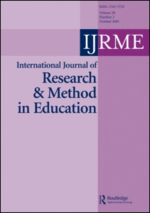Kollegani kysyi, miten opiskelijat voisivat videoida opetusharjoittelun oppimistilanteita. Olemme tutkineet videoinnin hyödyntämistä opetusharjoittelun yhteydessä. Nyt kuitenkin opiskelijat ovat itse videoimassa, mikä muuttaa tilannetta.
Vaikka asiassa on monta puolta, laittaisin opettajaopiskelijoiden videoinnit YouTubeen tai Vimeoon, jotta videoiden katselu, ja sitä kautta pedagoginen käyttö, onnistuisi mahdollisimman monilla päätelaitteilla (eri tietokoneet, tablet-laitteet, älypuhelimet, jne.). Näistä palveluista on opiskelijoiden helppo jakaa videoiden linkkejä esim. Moodle-ympäristöön, jota harjoitteluohjauksessa käytetään. Videoiden pitää vaan olla palvelussa ns. piilotettuna (esim. YouTubessa vain suoralla linkillä avautuvina; Vimeossa on saanut salasanan taaksekin).
Kun videoidaan oppilaita, olen aina pyytänyt luvat vanhemmilta. Tämän voinee usein hoitaa luokan oman opettajan Vilma-tiedustelulla. Tässä siis on kyse videointiluvasta. Sitten on vielä muuta huomioitavaa.
Videoiden tekijänoikeudet. Ne ovat kullakin videoijalla, jaettiin materiaali sitten miten tahansa. Jos YouTubeen tai Vimeoon laitetaan, palvelu ottaa käyttöehdoillaan laajat oikeudet videoiden käyttöön mutta eivät ole tietääkseni väärinkäyttäneet materiaalia vaan palvelut tarvitsevat laajat oikeudet, jotta silloin ne voivat antaa palveluissa alustojen moninaiset tekniset mahdollisuudet tarjolle.
Oikeus julkaista videomateriaalia. Julkaiseminenhan ei periaatteessa ole tarpeellista muuta kuin videon välittämiseksi opiskelijoiden välillä. Käytännössä selittäisin oppilaille ja vanhemmille, että kyse ei varsinaisesti ole julkaisemisesta vaan videot ovat vain kurssilaisten nähtävillä ja poistetaan verkosta harjoittelun päätteeksi.
Videoilla näkyvien oppilaiden ja muiden oikeudet (ns. Consent Commons) ja yksityisyydensuoja. Kun video on YouTubessa tai Vimeossa, se on teknisesti julkaistu ja antaa julkisen vaikutelman myös oppilaiden vanhemmille. Vaikka videot löytyvät vain käyttämällä oikeaa verkko-osoitetta eivätkä esim. palveluiden omilla tai Googlen hauilla, on videot avoimempia. Mutta jos asia selitetään osapuolille niin, että videoita eivät katso muut, tämäkin pitäisi olla videointiluvan myötä ok.
Muutamia aiheeseen liittyviä linkkejä:
Opettajan tekijänoikeus -blogi: http://www.opettajantekijanoikeus.fi
OpeRight: http://operight.fi/
Opetusministeriön tekijänoikeussivut: http://www.minedu.fi/OPM/Tekijaenoikeus
Kopiraitti-sivusto: http://www.kopiraitti.fi/
Sosiaalisen median kysymykset: http://www.edu.fi/tvt_opetuksessa/sosiaalinen_media
